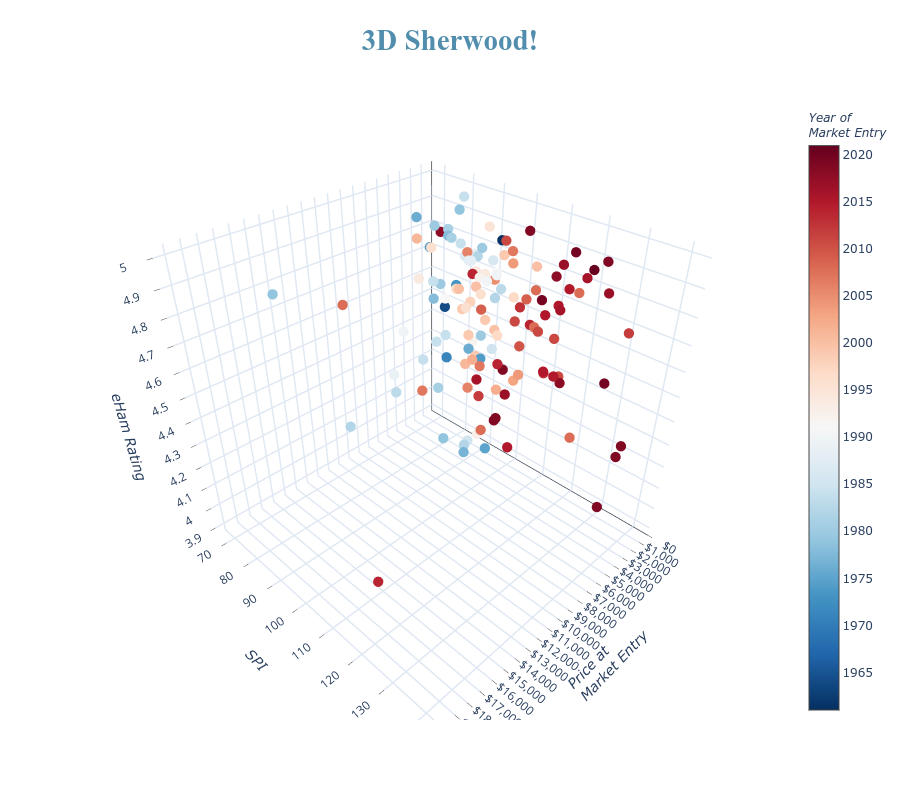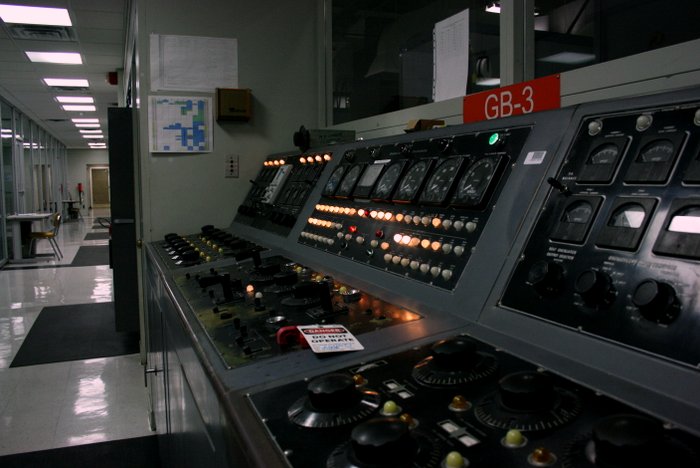Radio Waves: Stories Making Waves in the World of Radio
Welcome to the SWLing Post’s Radio Waves, a collection of links to interesting stories making waves in the world of radio. Enjoy!
Holme Moss transmitter (BBC Archives)
A look at how the BBC’s third television transmitter in West Yorkshire was built.
These original masts broadcast to the surrounding population until 1985, when they were replaced by a new generation of transmitters.
Originally broadcast 12 October 1951
Click here to watch the video at the BBC Archives.
Sherwood Tools Available (K4FMH Blog)
The work that Rob Sherwood NC0B has contributed to the public over the past decade is unique and an amazing service to hams worldwide. I’m talking about, of course, his summary Table of receive bench tests published at this Sherwood Engineering website. He is independent so no one can think that advertising dollars could skew his assessments or how he presents them. As a CW contest operator, he is very clear that he sorts his table on the basis of what his experience and training has shown him to be the single most important measurement in his table: the narrow dynamic range.
I am not a CW operator or accomplished contester (lol) but enjoy the latter with my small team of fellow hams. But I am a statistician who likes to focus on problems where analytic tools can help foster a wider understanding of the data surrounding the problem area. So, working with Rob NC0B, I’ve created a set of “Sherwood Tools” to visualize his data as well as link them to a couple of other critical aspects of a rig purchase: market-entry price, consumer satisfaction, and the year the radio entered the market. These four vectors of data drive all of these tools, now available over at foxmikehotel.com.
 The tools include a sortable Sherwood list where you can sort on any of the nine tests he publishes as well as the composite index of them that I created and included in my two-part NCJ articles in 2021. A set of 3D data visualizations are available to simultaneously view radios on four data elements (that does make it 4D, technically). Several graphs illustrate key aspects of the data, including how to not get tripped-up in the “ranking” of radios where the bench measurements are just not appreciably different. Seeing how the past 50 years of radios appearing in Rob’s Table have made a remarkable and clear progression toward the best receiver performance that modern test equipment can detect is in another tool. In addition, how the trend in getting a receive bang-for-the-buck has progressed over this 50 year period is there, too. Finally, I’ve used the industry-standard tool by Gartner, the Magic Quadrant, to help isolate radios in Rob’s Table that perform and are rated above average at various price points. I call these the Golden Quadrant Lists.
The tools include a sortable Sherwood list where you can sort on any of the nine tests he publishes as well as the composite index of them that I created and included in my two-part NCJ articles in 2021. A set of 3D data visualizations are available to simultaneously view radios on four data elements (that does make it 4D, technically). Several graphs illustrate key aspects of the data, including how to not get tripped-up in the “ranking” of radios where the bench measurements are just not appreciably different. Seeing how the past 50 years of radios appearing in Rob’s Table have made a remarkable and clear progression toward the best receiver performance that modern test equipment can detect is in another tool. In addition, how the trend in getting a receive bang-for-the-buck has progressed over this 50 year period is there, too. Finally, I’ve used the industry-standard tool by Gartner, the Magic Quadrant, to help isolate radios in Rob’s Table that perform and are rated above average at various price points. I call these the Golden Quadrant Lists.
Rob NC0B has not endorsed these tools and neither have Scott K0MD or Bob K0NR. But all three have given advice and suggestions for how I’ve designed them for which I am very grateful. None should be held accountable for any mistake or result that the viewer may find there. I hope these Sherwood Tools are of use to viewers who are evaluating rigs. (They have been to me over the past two years of doing this research during which I’ve purchased two new HF rigs.) Making a written set of must-have features is a critical complement to these tools. Just like Smokey the Bear says: only you can put out forest fires. Only you can determine the feature-set and ergonomics to satisfy your use-case for a new radio!
I’m outlining a talk on the use of these tools should clubs wish me to visit with them via Zoom. See my contact tab above. I’m good on QRZed.
Click here to check out the new tool over at foxmikehotel.com.
A Look at the Strange, Unique and Compelling World of LPFMs (Radio World)
This radio aficionado keeps tabs on the LPFM community through his LPFMDatabase.com
When the call letters for an LPFM station in Florida were deleted in March, one of the first outlets to report it was a radio devotee who tracks the low-power FM community so closely that he has a database tracking every single LPFM on the dial.
When the FCC created the LPFM radio service in 2000, Jim George’s interest was piqued. Intrigued by the breadth and range of LPFM stations out there, George started the LPFM Database in 2001. The website lists LPFM radio stations state by state, with up-to-date listings of the status, coverage maps and format listings of low-power FM stations nationwide.
Dipping into his database page is like getting a slice of American life. A peek at LPFM stations in the California Bay Area reveals stations like KUSF in San Francisco, which is focused on inspiring peace through technology via education, music and dance. Across the nation, station themes run the gamut — be it a station celebrating the Baha’i Faith in the Arizona desert, two stations devoted to the Pascua Yaqui tribe or a trade association focused on paint.
Another page is devoted to LPFM statistics, including a running tab on when an LPFM license was granted, how many LPFM booster stations currently are broadcasting and how many stations have undergone frequency changes. When those station call letters for station WPCQ 96.3 in Clearwater, Fla., were deleted in early March, George noted that the deletion of the station brought the national count of active, on-the-air LPFM stations down below 2,000 for the first time in quite a while. In late April, the number had dipped to 1,992. [Continue reading at Radio World…]
Shortwave Revival a Non-Starter? The Authors Respond (Radio World)
An in-depth guest commentary addressing copious feedback from Radio World’s readers
Radio World’s “Guest Commentaries” section provides a platform for industry thought leaders and other readers to share their perspective on radio news, technological trends and more. If you’d like to contribute a commentary, or reply to an already published piece, send a submission to [email protected].
The following commentary is by Keith Perron, formerly of Radio Netherlands, Radio Canada International, and BBC World Service and Daniel Robinson, former chief White House correspondent at Voice of America.
Our joint article “Why Reviving Shortwave is a Non-Starter” stirred up quite a bit of controversy, so we would like to offer this response, with specific focus on the questions of DRM, and address criticisms from members of the shortwave hobbyist community.
DRM consortium chairwoman Ruxandra Obreja described our suggestion that international broadcasters use crises such as Ukraine to attract additional funding as “exaggerated.”
Yet, from a budgetary standpoint, there has not been a single global crisis these organizations have allowed to go to waste, so we’re not sure why critics take umbrage.
Obreja acknowledges that former dependence on shortwave as a key information source gave way to internet and mobile, but asserts that there are “still many shortwave hobbyists,” She cites a BBC-supplied estimate of 30-40 million shortwave listeners in Africa alone.
This is to be expected from anyone used to reflexively accepting official statistics. But it’s a fact that key funding sources, such as the British government and U.S. Congress, rarely demand detailed answers as to how such figures are arrived at. [Click here to read full article.]
Top radio chief sees Russia ‘thrown back 40 years’ (France24)
Moscow (AFP) – It survived for decades as one of Russia’s leading independent voices, but when radio station Echo of Moscow shut down last month, long-time editor Alexei Venediktov knew it was the end of an era.
“The country has been thrown back in every sense, for me it’s been set back 40 years,” said Venediktov, who joined the station at its founding in 1990 and steered it through the 20 years of Vladimir Putin’s rule, until the Russian president sent troops into Ukraine two months ago.
“We are now somewhere around 1983… war is going on in Afghanistan, dissidents are in jail or kicked out of the country and Andropov is in the Kremlin,” he said, referring to Soviet leader Yuri Andropov, who like Putin served in the KGB.
With his mop of curly grey hair, 66-year-old Venediktov has been a top figure of Russia’s media scene for years, leading the flagship of liberal broadcasters.
Echo of Moscow first took to the airwaves in August 1990, in the final months of the Soviet Union, becoming a symbol of Russia’s new-found media freedoms.
Venediktov, a former history teacher, joined the station as a reporter and became editor-in-chief in 1998. [Continue reading at France24…]
Do you enjoy the SWLing Post?
Please consider supporting us via Patreon or our Coffee Fund!
Your support makes articles like this one possible. Thank you!



Why is Keith Perron always so grumpy?
Why do you say that? Both Keith and Dan are spot on, and realistic with what they wrote.
I say that not because of solely this article but because of how just about every comment that I have read of Mr. Perron’s, in both articles as well as in the comment section of this website, carry such a negative and pessimistic tone to them.
How does one who so often ?complains and offers a negative tone and energy offer anything to the world of broadcasting or the hobby that is shortwave listening? How is such a tone beneficial to the people who are members of those groups? People who act this way very quickly find that those who would normally associate with them distancing themselves as such attitudes are not helpful nor welcome.
It is important to place things under close scrutiny and analysis and to be critical when the time calls for it however it is the manner in which you present these findings and observations that matters. If one is going to give criticism then one should do so in a fair, even handed manner and word it in such a way that encourages progress and improvement rather than just offering beratement. I offer this as from what I have seen, acting in the latter fashion seems to do nothing except pit people against each other, create enviromments that do little to foster solutions as well as stifle progress.
Russia “Thrown Back 40 Years”
Somehow I think that’s exactly what Putin had in mind.
Could you CORRECT the SheSOMETHING spelling in the Headline, so a later search might find the story?
Sherood Tools Available (K4FMH Blog)
Done! Thanks!